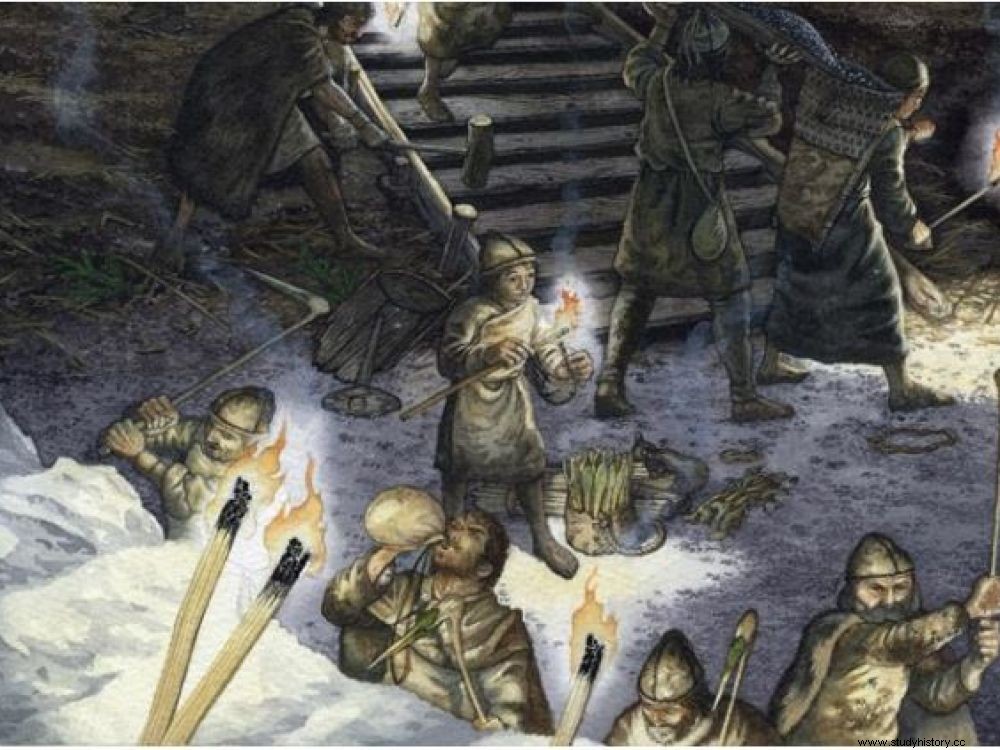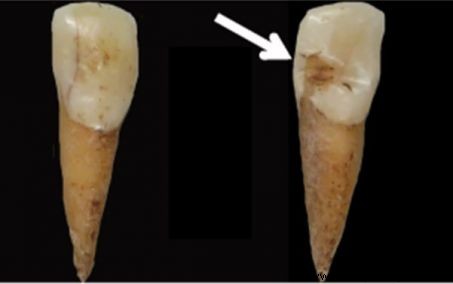New studies look at child labor since prehistoric times. Example with the salt mines of Central Europe.

In the Bronze Age, children worked in the salt mines of present-day Austria.
Children are the forgotten greats of archaeology! While we often talk about prehistoric men and women, the question of the youngest - and childhood in general - is rarely addressed. Could things be changing? This research topic seems to be of growing interest to scientists, as the archaeoanthropologists Mélie Le Roy, from the Mediterranean Laboratory of Prehistory (UMR 7269), in Aix-en-Provence and Caroline Pollet, from the University of Libre de Bruxelles (ULB), during the last annual meeting of the European Association of Archaeologists (EAA) held in Barcelona, Spain, in early September 2018.
“Many remains testify that children, including young children, have been employed in more or less demanding specialized tasks since the most archaic times, explains Mélie Le Roy, joined by Sciences et Avenir. These are fingerprints on bricks, for example, or on ceramics, or even bone marks indicating repeated gestures ". During this international meeting, the Austrian Hans Reichsteiter, of the Natural History Museum in Vienna, affirmed that children were exploited in salt mines, located on the current territory of Austria, from the age of bronze.
“A leather cap belonging to one of them and dated to 1000–1300 BC. J.-C., as well as very small mining peaks, have been discovered at the bottom of the deepest galleries suggesting that very young individuals worked in these difficult environments at times even older than we thought “, he explains in an article in the journal Nature . "Because of their small size, they could be used to crawl into guts inaccessible to adults", adds Mélie Le Roy.
 Children's teeth from the Neolithic period showing signs of abrasion. ©Mélie Le Roy.
Children's teeth from the Neolithic period showing signs of abrasion. ©Mélie Le Roy.
The analysis of funerary practices on megalithic sites in the south of France (6000 to 2000 BC), such as the dolmen of Gabaine, in the town of Labeaume, in Ardèche, enabled Mélie Le Roy to bring to light teeth of very young children carrying particular grooves. “These abrasions only form when people use their teeth to repeatedly stretch or soften tendons or plant material “, she clarified. Fibers probably intended for sewing skin clothing. These quenottes dating from 3500 to 2500 years before our era were those of two toddlers aged four to nine. To date, this is one of the oldest testimonies of the commitment of children to specialized work.
Today, 150 million children (source UNICEF) are still working in the world while international standards prohibit it.
